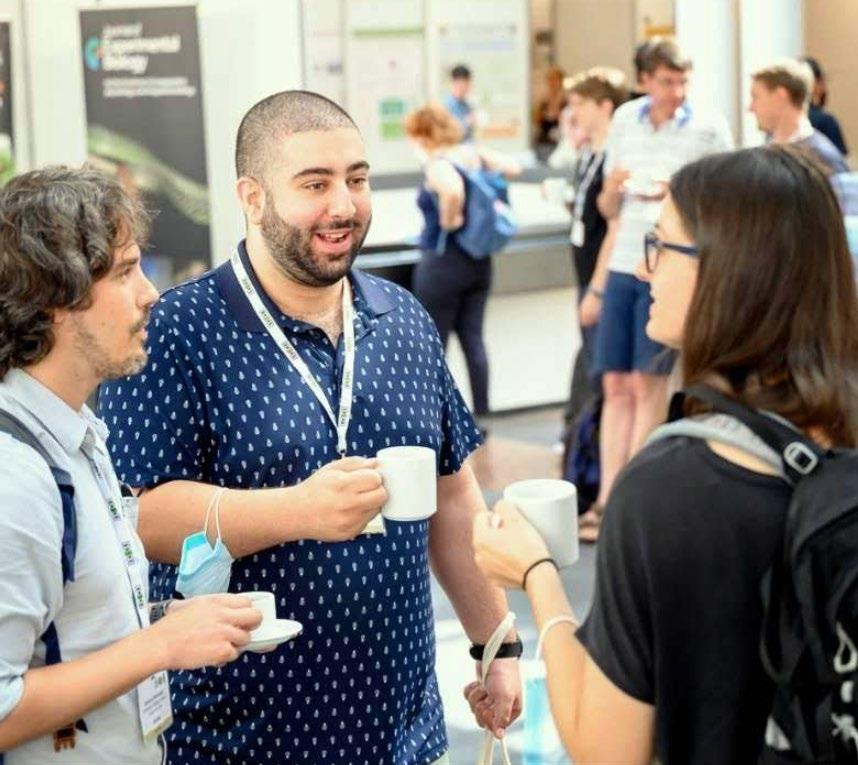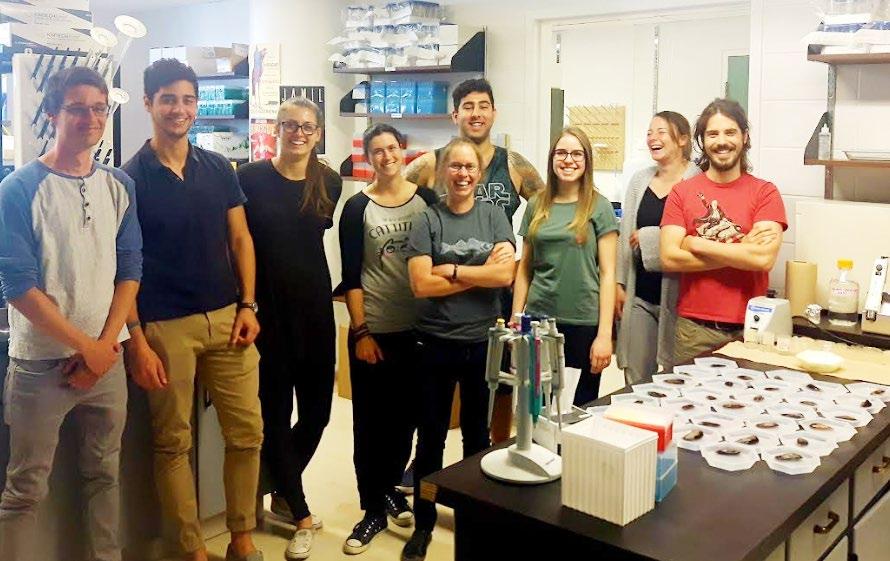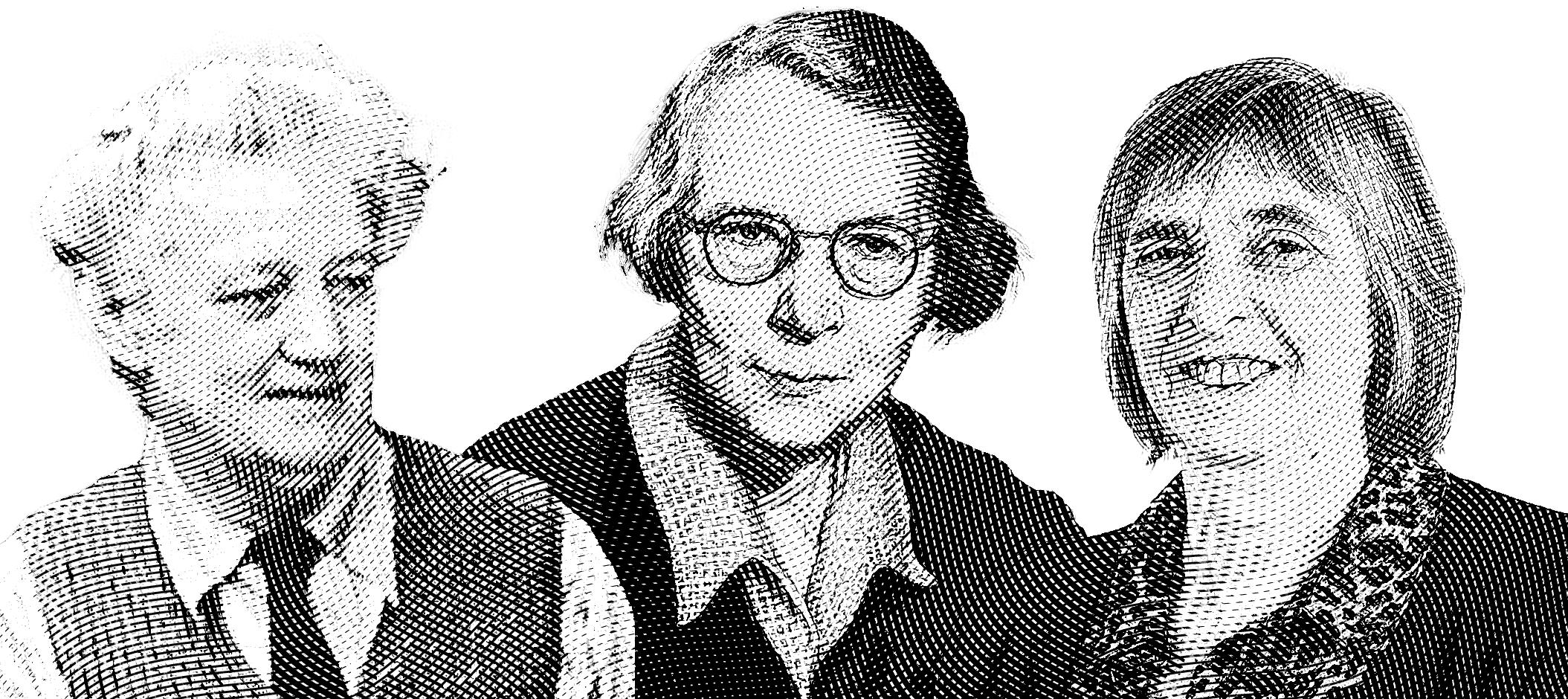
5 minute read
GEORGES HRAOUI
BY CAROLINE WOOD
EVen as a child, I had this fierce drive to understand how everything worked,” Georges says. “For instance, I was fascinated by dinosaurs and all their different shapes and sizes—what was the point of the sail on the back of Spinosaurus or the long necks of sauropods?”
In his first year as a student at Université de Montréal, this innate curiosity led Georges to study a diverse range of courses across biology, chemistry and the arts, even dabbling in criminology, before he decided to focus on biology. But the pivotal moment that turned him towards research came during a summer internship at the Institut de recherche en Biologie Végétale (IRBV) with Jacques Brodeur. “Until that point, my education had predominantly been concerned with learning facts to repeat back on exam papers. But on this placement, I was told to search the literature and design a new protocol to achieve our objective. My project was on aphid parasitoids of the genus Aphidius, with the goal to investigate what factors could modulate induction of summer diapause in these species.1 I was suddenly having to think for myself and apply what I had learnt in the classroom to solve a real-world problem—and I was hooked!”


This first taste of “proper research” persuaded Georges to pursue a Master’s in Biological Sciences at Université de Montréal, supervised by Sophie Breton and co-supervised by Daniel Boisclair. His thesis subject was a comparative study of the mitochondrial thermotolerance of invasive and native freshwater mussels. “Quagga mussels (Dreissena bugensis) are a highly problematic invasive species and are rapidly spreading worldwide,” he says. “We hypothesised, based on previous literature, that high thermotolerance may be a key factor for the Quagga mussel’s success, which could be conferred by more heattolerant mitochondria.”
To investigate this, Georges used high-resolution respirometry to compare the mitochondrial respiration of Quagga mussels against a native freshwater species, Elliptio complanate, when exposed to a broad range of temperatures. Unexpectedly, the results showed unequivocally that Quagga mussels possessed less thermotolerant activated by ROS to upregulate antioxidant genes. mitochondria compared with the endemic species, with a much more pronounced aerobic metabolic depression at elevated temperatures.2 “It was completely counterintuitive to our expectations and taught me a very important lesson: even if a theory sounds sensible, you cannot presume it to be true until you have tested it thoroughly,” Georges says.
So, what might be behind the Quagga mussel’s success? “We concluded that life history traits may have a more important role,” says Georges. “Quagga mussels colonised freshwater habitats relatively recently and retain some of the primitive characteristics of their marine ancestors, including high fecundity, fast growth, early maturity and short lifespans. This reduces the selection pressure for resistance mechanisms to environmental stresses, because the population can rapidly bounce back.”
Despite enjoying getting to grips with aquatic physiology, Georges decided it was time for a change for his PhD. “I knew that I loved working with mitochondrial physiology but I was also keen to do something more closely related to human health research. At the same time, Sophie was encouraging me to look at other institutes to broaden my horizons and skill set.” This led to his current position in Diana Averill-Bates’s group at the Université du Québec à Montréal, to characterise reactive oxygen species (ROS) generation in HeLa cells. “Fortunately, the lab has a very knowledgeable research associate, Melanie Grondin, who helped me transition from someone who had never handled a cell culture before to doing experiments independently within a month,” he says.
Georges’ thesis focuses on understanding the role of ROS during adaptive responses to heat stress. As he explains: “When we expose cells to a mild heat stress for an extended period, for instance, 40°C, this can activate a cellular adaptive response that can protect the cell against subsequent exposures to lethal heat shocks, that is 42°C and above.” This adaptive response involves increased expression of heat shock proteins and antioxidants, but the initiating factors are poorly understood. So far, Georges’ work has demonstrated a critical role for Nrf2, a redox-sensitive transcription factor that is
“Our results show that cellular ROS levels increase during mild heat stress and originate from both mitochondria and NADPH oxidase.3 But if Nrf2 activity is modified via overexpressor and knockdown cell lines, this significantly impacts ROS generation during mild heat stress,” he says. “My challenge now is to clarify the link amongst the mitochondria, ROS and Nrf2 activity during the cellular adaptive response. Understanding this could lead to new therapeutic treatments for a variety of human diseases that implicate increased oxidative stress. Some of our leads in elucidating this cellular cascade could include studying the expression of specific proteins such as DJ-1, a multirole protein that is known to regulate Nrf2, and PGAM5, a protein that binds Nrf2 to mitochondria and allows Nrf2 to become a mitochondrial redox sensor.”
Georges first became involved with the SEB when he was invited to present some of the results from his PhD at the 2022 Annual Conference in Montpelier. “It was my first attendance at an international science conference and it was an amazing experience,” he says. “The SEB has such a strong community of researchers who work on thermal stress and mitochondria, covering many different but overlapping fields. It was incredible to meet some of the biggest names in my area and I received valuable feedback on my presentation, suggesting ways I could take my research forward. Similarly, I even found that I was able to inspire others—for instance, a researcher on plant antioxidant mechanisms who told me I had convinced him to investigate whether antioxidant regulators in potatoes during thermal stress could explain the increased thermal resistance of crops previously exposed to sublethal temperatures.”
Georges believes the Society plays an important role beyond sharing and discussing results. “When you know of researchers just through their papers, it can feel like they are just machines that churn out work. It is so important to have these opportunities to meet people and remember that they are just like you, and go through the same struggles that we all experience at times,” he explains.
OUR RESULTS SHOW THAT CELLULAR ROS LEVELS INCREASE DURING MILD HEAT STRESS AND ORIGINATE FROM BOTH MITOCHONDRIA AND NADPH OXIDASE
When asked about his future plans, Georges says he is open to opportunities in both academia and industry, but prefers to focus on the present for now. When he’s not in the lab, this tends to involve “seeing friends, playing electronic music and hanging out with my three cats.”
Above Georges Hraoui during a short intermission between presentations at the 2022 SEB Conference in Montpellier
Photo credit: Society of Experimental Biology
Left Sophie Breton’s group during a laboratory meeting in 2019
Photo credit:
Georges Hraoui
“I am very happy with where I am right now,” Georges concludes. “One of the aspects I enjoy most about my work is the collaborative nature of research. In our lab group for instance, we work on different projects but we are all trying to paint the same big picture, like artists working through different canvases. It is very gratifying to work together in this way to push the boundaries of what we know and understand.”
References:
1. Tougeron, K.,, Hraoui, G.,, Le Lann, C., van Baaren, J. and Brodeur, J., 2018. Intraspecific maternal competition induces summer diapause in insect parasitoids., et al. Intraspecific maternal competition induces summer diapause in insect parasitoids. Insect science,Sci 2018; 25(6), pp.: 1080-–1088.
2. Hraoui, G.,, Bettinazzi, S.,, Gendron, A. D., Boisclair, D., & Breton, S. ( AD, et al. Mitochondrial thermo-sensitivity in invasive and native freshwater mussels. J Exp Biol 2020). Mitochondrial thermo-sensitivity in invasive and native freshwater mussels. Journal of Experimental Biology,; 223(2),: jeb215921.
3. Averill-Bates, D.,, Hraoui, G., M, Grondin, M., Breton, S. 2022. The role of ROS and Nrf2 in the induction of a hormetic, adaptive stress response during mild heat shock at 40 degrees C. M, et al. The role of ROS and Nrf2 in the induction of a hormetic, adaptive stress response during mild heat shock at 40°C. Free Radical Biology and Medicine 2022, 192, pp.: 97.












